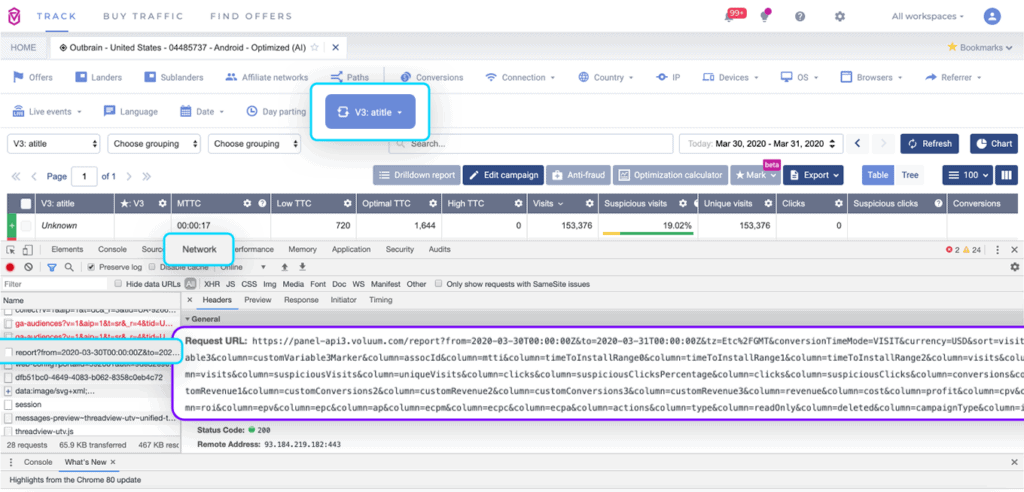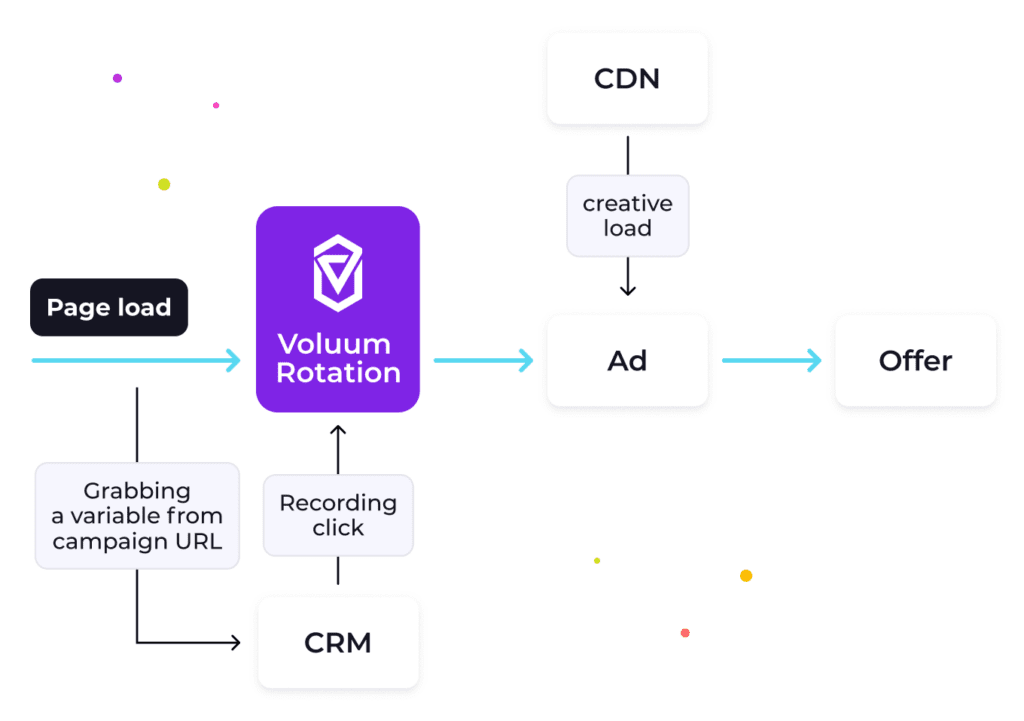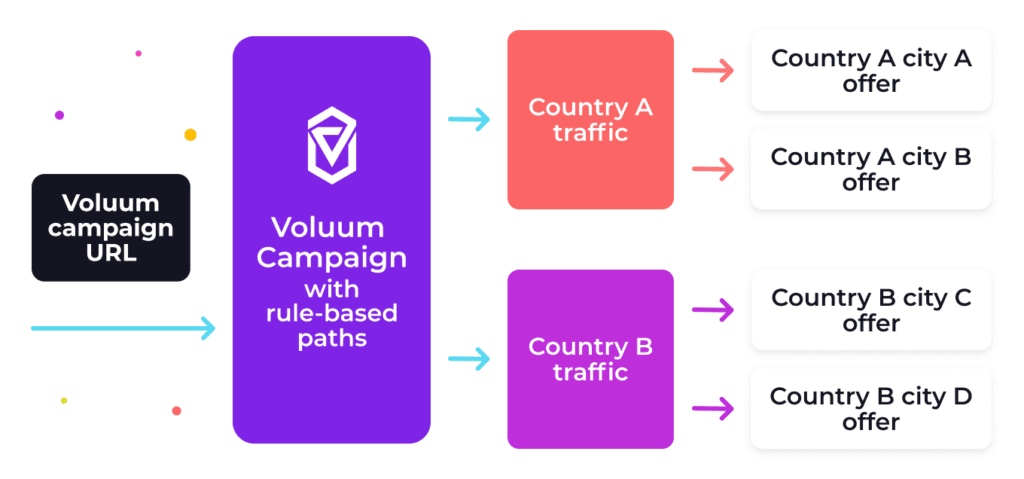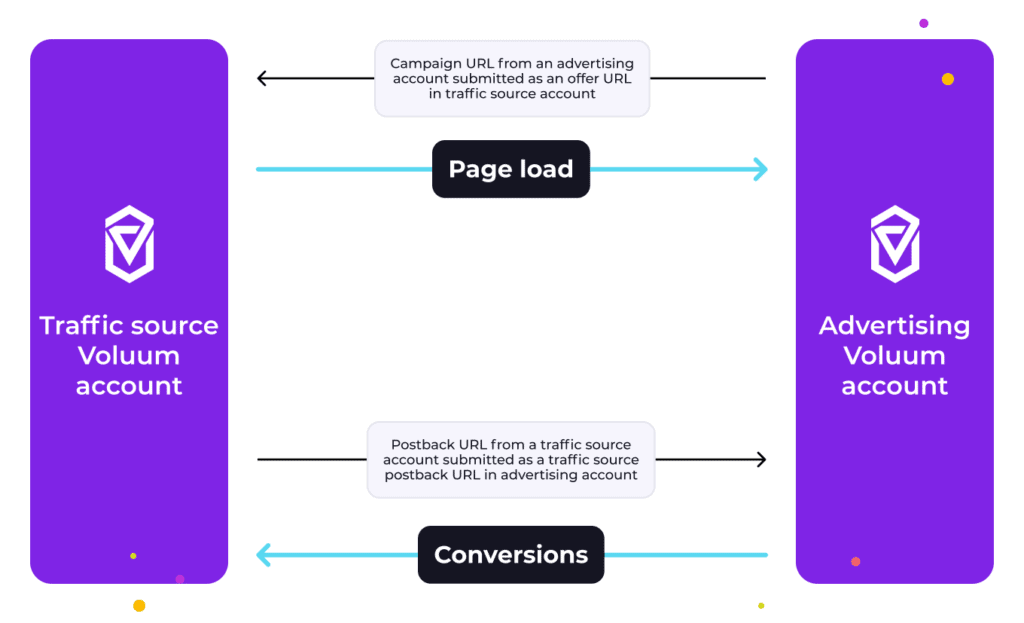Voluum is not just a pretty face – behind it there is a sophisticated computer brain capable of handling millions of upserts each second. The idea behind constructing the Voluum database was that it should allow easy API access to all its resources for various parties.
Think about the Voluum front-end (the ‘face’) as just one of the services fetching data from the Voluum database (the ‘brain’) through API. That other service could be your solution.
Voluum’s tech is successfully used by many customers to solve their specific needs. In short, their tech provides an input and / or output, while Voluum serves as a reporting mechanism.
It is relatively easy to build a script that grabs a custom variable from a campaign URL to serve specific ads like an ad server or even a complete system that will override path settings in Voluum but still use its reporting capabilities. Voluum is flexible. So, let’s see how you can access Voluum with your system and what are the popular use cases and arguments for doing so.
Voluum API
Voluum API is available at api.voluum.com. It is a REST-type API that uses JSON as a format. By launching a correct request, you can access any reports and alter paths, create entities –- you can automate all the things you normally can do with the Voluum panel. You can also send Voluum data to your business intelligence platform, a CRM, or automation platform of your choice.
The best way to learn how you can access various Voluum resources is by looking into your web browser’s developer tools and seeing what kind of requests are being used when using the panel.

More information regarding using Voluum API can be found in our documentation, but for now, you have a basic understanding of how it works.
Redirect webhook
The additional mechanism that allows you to expand upon Voluum functionalities is the redirect webhook. This mechanism allows you to completely bypass path settings set in Voluum and use your own rotation, automation and testing solutions. You can develop a program that will perform massive automated tests on a large audience, with complexity exceeding what Voluum offers and was built for.
Get all visits and clicks into your system
Voluum can feed your system with live event information through Amazon SNS topic. These live events are visits and clicks with related information like visit time, visitor’s geo and device data.
You can subscribe to an Amazon SNS topic using Amazon SQS, so data packets are bundled and queued into the respective topic, which ensures data integrity. Then you can feed your data to any fancy data lake or data analysis engine you get insights from.
Ask your Dedicated Account Manager about this feature.
Now let’s move onto real-life examples of how Voluum’s backend can be used.
Use case 1: Voluum as an ad server
For some, Voluum works perfectly not as an ad tracker but rather as an ad server. Apart from hosting images (that can be hosted on any CDN), Voluum can do what ad servers typically do: serve the right ads to the right audience.
One of our clients from the adult industry uses Voluum for this, since the whole adult industry is rather specific: the websites deal with huge amounts of quality traffic while their tech is very often outdated and their owners frequently lack the technical knowledge required for implementing scripts. What works well on mainstream websites is not feasible on adult sites.
In short, it is extremely hard to force publishers to put any scripts on their page. Hence there was a need to create an alternative solution.
Here’s how it works…
The client uses banners that are actually landing pages. They host creatives on an external CDN and use their own CRM for managing campaigns. Voluum is only used for rotating ads and also by their in-house media buying team.
They add a variable with campaign ID to the campaign URL and when the ad loads, they capture it with their CRM and then fire a click to Voluum. When a visitor clicks the ad, they are redirected to the offer.
Before, they had to either persuade publishers to install scripts for each campaign or (equally as hard) have developers prepare a PHP file with ads list and encoded click URL. This file would rotate the ads but require devs’ assistance each time it had to be updated.
With Voluum acting as an ad server, a single non-technical user can manage ad rotation.

Use case 2: Voluum as a ‘smart link’ generator
Some clients use Voluum to segmentize their audience and send them to offers that match their geographical location.
This is used, among other cases, in SMS tracking. One company uses SMS gateway to send general advertising messages with Voluum campaign URL in it to a global audience. They only have one campaign in Voluum but with complex rule-based path settings. The rules were set in a way that would send traffic coming from concrete countries to country-specific paths, and then to offers specific for specific cities.
This allows you to use targeted advertising in SMS campaigns or in other cases where an ad network doesn’t allow for GEO-specific targeting.

Use case 3: Voluum as a traffic source
If users don’t want to look for profitable traffic sources, they may simply use another Voluum account as a traffic source and get traffic from that place.
You have two Voluum accounts. The first one with a standard advertising campaign, and the second one that is treated as a traffic source. It may be yours or it may belong to another person or company. This second Voluum account may have their own traffic or purchase it from ad networks. The first Voluum account must simply submit its campaign URL to the second one that treats it as an offer URL. Conversions recorded in the first account are recorded from an affiliate network via postback and sent to the second Voluum account via traffic source postback URL.

This is just a glimpse…
The marketing landscape evolves much quicker than any software developer can update their product. This is why we built Voluum to support various use cases, even the ones that we didn’t originally anticipate.
You don’t need to create sophisticated solutions with API integration, you can creatively use what Voluum already offers to support your case. For example, you can use Voluum to run your own partnership network – ready-made, no programming skills needed.





